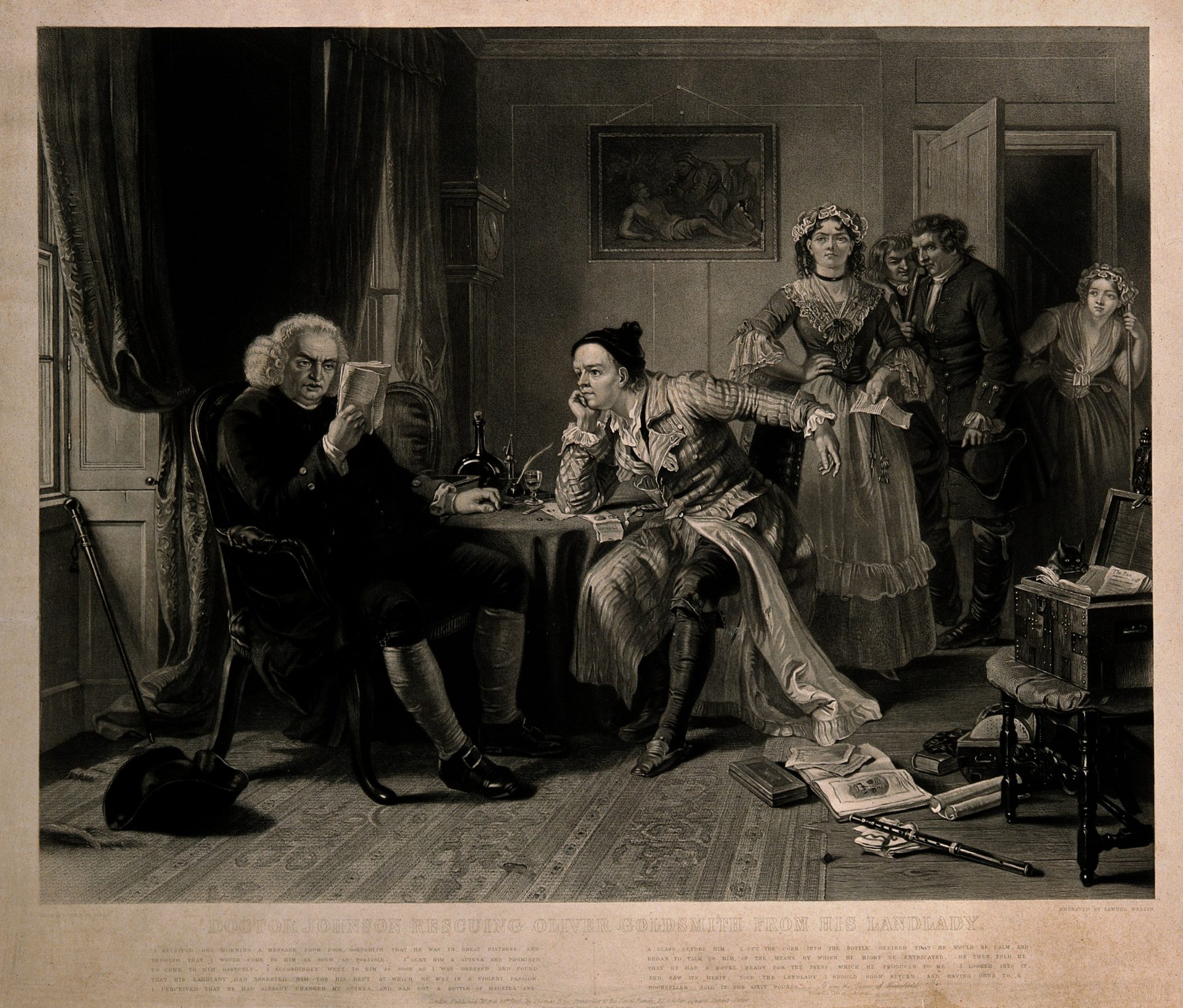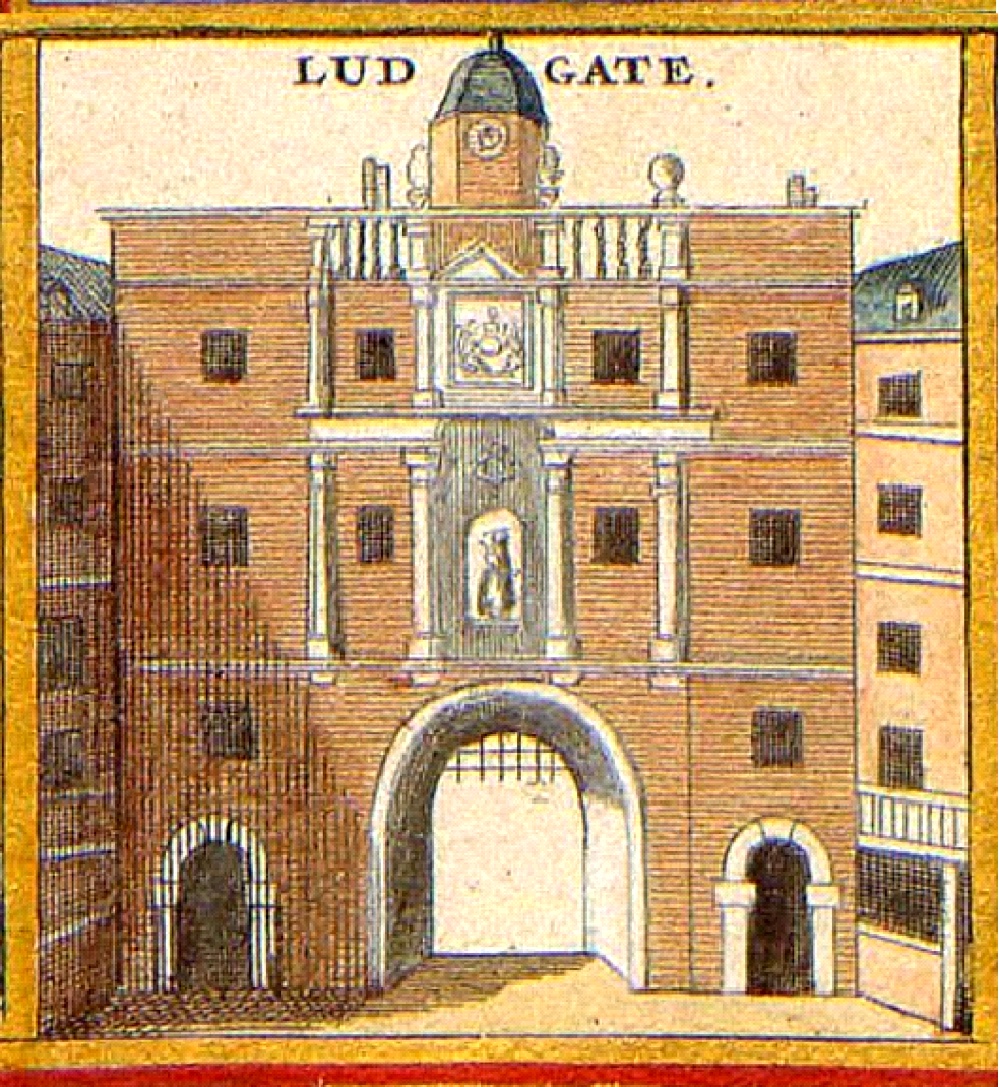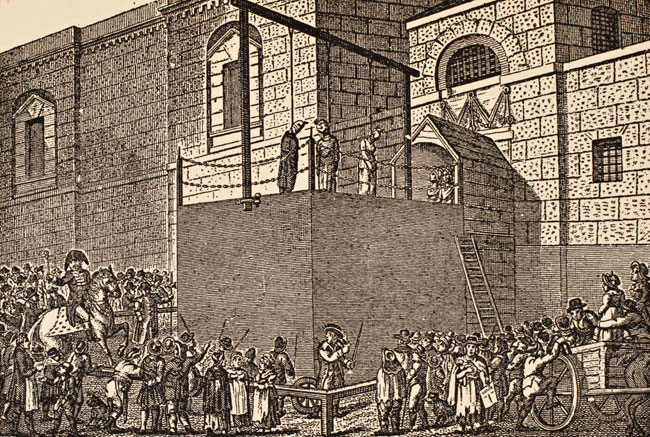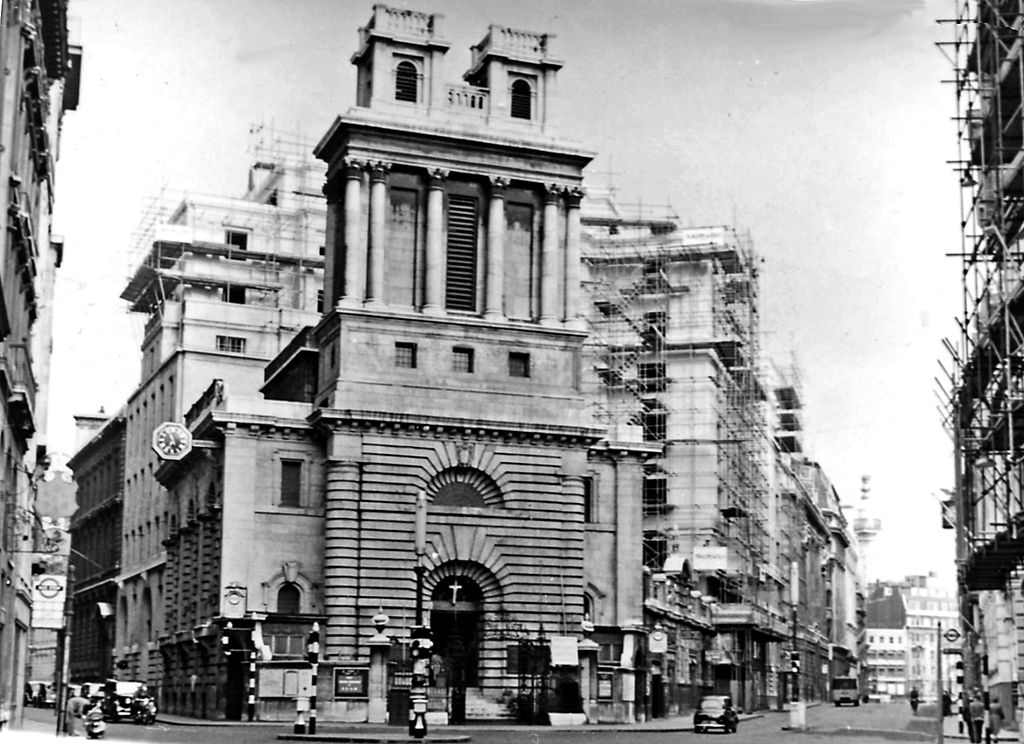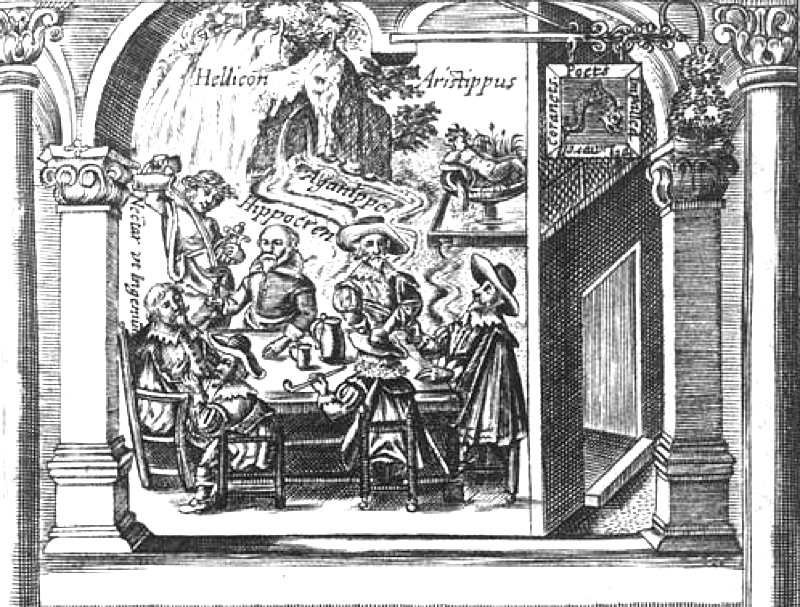Paternoster Row & Temple Bar Gate, Literary London, Learning Journeys, By Pen Lister. October 13, 2017. Categories: Tags: learning-point, London
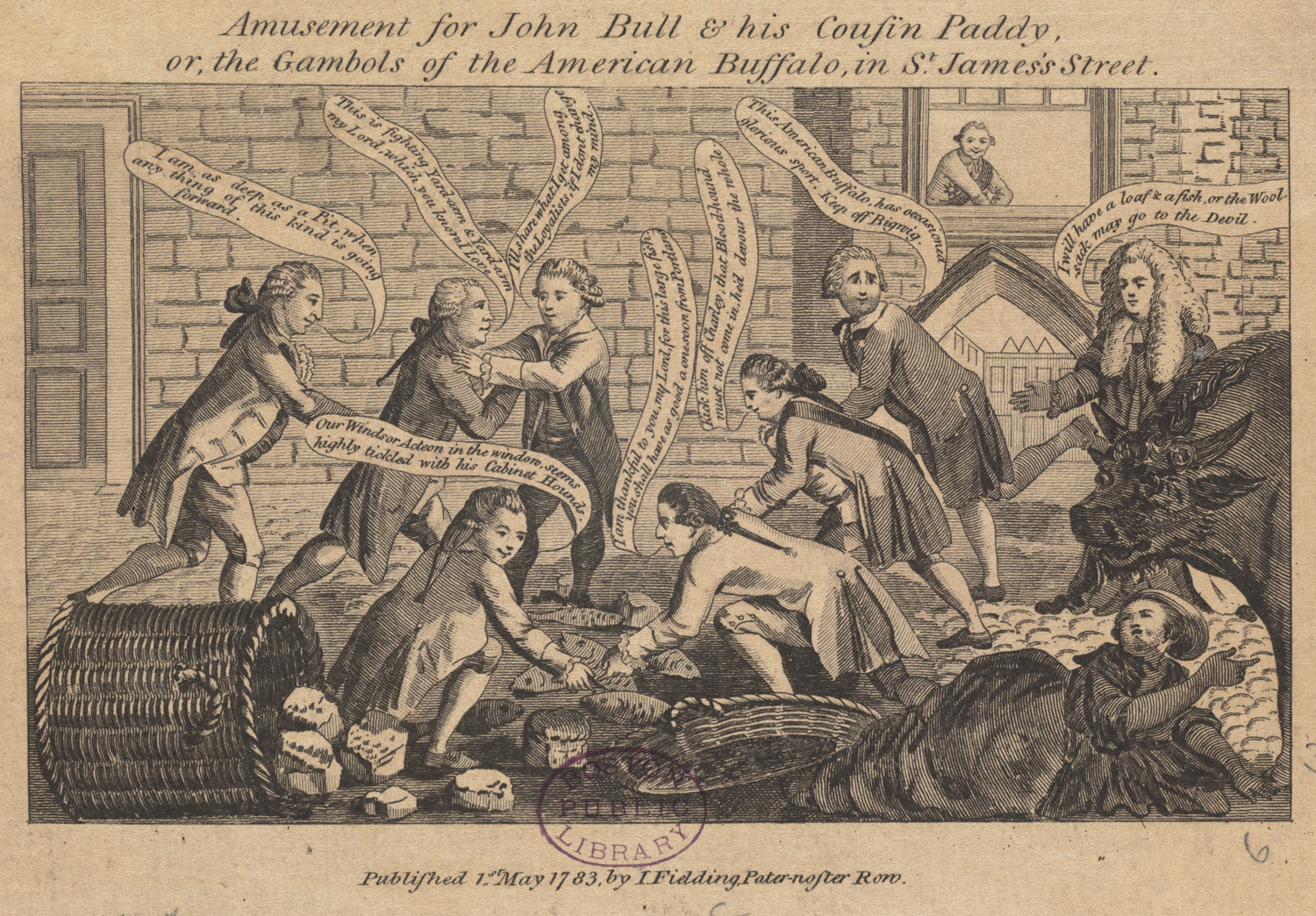
Full title of image file: Paternoster_Amusement_for_John_Bull__his_cousin_Paddy_or_the_gambols_of_the_American_buffalo_in_St._Jamess_street.jpg
Paternoster Row was the literary heart of London because of its proximity to St Paul’s. From the Medieval period Biblical and liturgical material was available here, and from the 16 th and 17 th century the area was a major centre of the publishing trade. Entries in the diaries of Samuel Pepys, from 1660 to 1669, make reference to him visiting booksellers in St Paul’s Church Yard, which backed onto Paternoster Row. Much of the country’s publishing history was lost in the Great Fire of 1666. Similarly, the Blitz of 1940 destroyed 300 years of literary history located here since the Great Fire.

http://www.british-history.ac.uk/no-series/new-history-london/pp579-587
The Chapters Coffee House was built in 1715. The weekly newspaper, ‘The Connoisseur’, recorded in 1754 that Chapters was the place where, ‘Those encouragers of literature and not the least judges of merit the booksellers’ held meetings and functions in the rooms (Clayton, 2003) Major publishing ventures started at Chapters such as the commissioning of Samuel Johnson’s ‘Lives of the Poets’ in 1777
The writer _ Oliver Goldsmith _ had a seat of honour at Chapters refers to the customers :
‘here are your thorough bred working authors of every description – your scissor men, your paste men, your transportation men and in one word, men competent to the composition of history, divinity, law, ethics, poetry, geography, astronomy, astrology and mathematics_‘_ (Clayton, 2003).
Goldsmith was part of a group called ‘The Club’ which included Samuel Johnson, David Garrick, Thomas Percy, Edmund Burke and James Boswell; they were known to meet regularly at Chapters. The poet _ Thomas Chatterton , who found no favour in publishing in Paternoster Row, frequented Chapter’s by acknowledgment in his letters dated from the coffee house,
‘I am quite familiar with Chapters Coffee House and know all the geniuses there’ (Thornbury, 1878).
Also notable is Anne and Charlotte Brontë’s visit in 1848, as related by Nick Holland:
‘…Charlotte recalled the Chapter Coffee House on Paternoster Row. It was here that she, Emily and their father Patrick had stayed as they made their journey to Brussels in February 1842, and a location that Patrick had stayed at himself as a young man. Hailing a cab, Charlotte asked to be taken there; it was quite simply the only location in London that she knew. Once there, Anne found the location very much to her liking. It was exactly opposite St Paul’s Cathedral, and she could hear the bells ringing and look out at the magnificent building from her window…’ (Holland, 2017)
Temple Bar Gate
Walk a few steps further west and towards the front of the Cathedral and to the right you will see the entrance to the remodelled Paternoster Square and Temple Bar Gate. Commissioned by Charles II from Christopher Wren and built between 1669 and 1672, the arch originally stood much further west at Temple Bar on Fleet Street, which was effectively the new entrance to the city as it expanded westwards. The arch was dismantled in 1878 and repositioned in Paternoster Square in 2004.
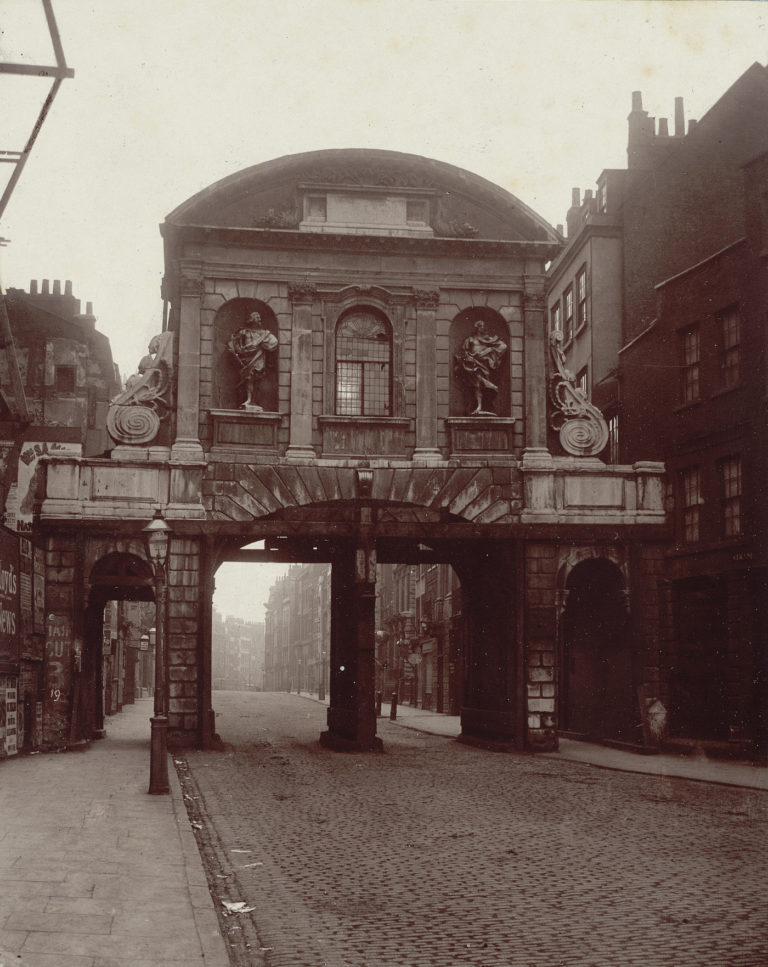
Temple Bar Gate in 1878. A & J Bool (Public Domain), https://commons.wikimedia.org/w/index.php?curid=52449050
Daniel Defoe was pilloried at Temple Bar Gate in 1703. Arrested in May, charged with sedition for writing The Shortest Way with the Dissenters (1702) he spent three days in the pillory in late July, followed by an indefinite stay in Newgate. Pilloried prisoners could die from injuries from the objects thrown by passers by. Defoe wrote A Hymn to the Pillory in prison, and it was published on the first day of his punishment. The mood of Defoe’s Hymn struck a chord with the public and they supported him, throwing nothing but flowers.
Aspects of this place to think about
What effect did Paternoster Row and publishing have on the world? What was the role of print media in those days?
- Which locations do you associate with print and publishing? Why?
- The role of newspapers, journalism and cartoons in the history of literature
- The role of women in print and publishing in London
- Look at the surrounding architecture and think about the destruction of the Great Fire and the Blitz
Content available at the location, about the place or area
Investigate all the other icons on the Aurasma augmented trigger, use the icons guide to find out what is available.
![]()
This guide is accessed via the layers icon in the bottom left of any trigger using a similar icon to this one:

Triggering the Augmented Reality
Remember to focus on the trigger image using the Aurasma camera, centering the image to be as similar to what you see on the map as you can. The Aurasma camera provides small watermarks at each corner of its camera view to help guide your focus.
Image from
BPL. Via Wikimedia Commons.
Paternoster and Temple Bar Gate Resources
By Pen Lister October 18, 2017
Paternoster Row
Old and New London: Volume 1. Originally published by Cassell, Petter & Galpin, London, 1878. http://www.british-history.ac.uk/old-new-london/vol1/pp274-281
Wencelaus Hollar’s Illustrative panoramas of the great fire of London
His panorama of London and Westminster (created early 1640 s) with a similar view after the fire https://www.bl.uk/collection-items/great-fire-of-london-map
Hollar’s 17 th century map before the fire of London
A stunning record of the streets of the City of London in the seventeenth century https://www.bl.uk/collection-items/great-fire-of-london-map
London Street Views - Paternoster Row
Street life in Paternoster Row and close by, early to mid nineteenth century https://londonstreetviews.wordpress.com//?s=paternoster&search=Go
Paternoster Row in Pepys’s Diaries
Samuel Pepys Diary website https://www.pepysdiary.com/encyclopedia/1615/%20
Daniel Defoe in the Pillory at Temple Bar Gate
Following the publication of The Shortest Way with the Dissenters, Defoe was accused of seditious libel and put in the pillory on the last three days of July 1703. http://www.historytoday.com/richard-cavendish/daniel-defoe-put-pillory
Letter from the 2 nd Great Fire of London (the Blitz)
New Year’s Eve 1940, a London fireman sat down to write a letter to his wife https://www.museumoflondon.org.uk/discover/blitz-letter-great-fire-1940
Peter Ackroyd’s London: the great fire and bombing (part 1).
Through eyewitness accounts from the likes of Samuel Pepys and Virginia Woolf, the events of 1666 and 1940 are vividly revealed… https://youtu.be/Dn6E_4g4UAw
Mrs Gaskill gives an account of the Chapter coffee house
1848 - the time of the Brontë visit, and we have a clear description of the place (from Club Life of London, Vol. 1 (of 2) by John Timbs) http://www.pascalbonenfant.com/18c/clubs/jt_thechaptercoffeehouse.html
